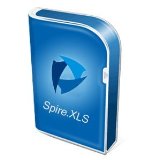
Frame semantics translation
This method is for rank beginners and I believe it to be the most efficient way of attaining a beginner level from scratch. It’s inspired by the theory of Conceptual Semantics and the worthy aspects of Grammar Translation. I used this system to attain a beginner level in Mandarin in six months despite putting in less than three hours’ study per week.
1. The student is issued with a sketch book.
2. Each double page is headed by a theme consisting of a semantic field. The fields I used were: shapes, colours, animals, sports, food (with sub fields for drink, fruit, vegetables and meat), house & garden, emotions, computers, countries, money, business, Britain, China, America, war, government, law, language, media, the human body, clothes, family, jobs, time & dates, geography, weather, cooking & dining, places of business, transport, music, numbers, literature, great people, the cosmos, energy, western history, religion, education, health, diseases, crimes and birds.
3. The student draws, if possible, the main concepts (nouns) that come under that field. If it is not possible to draw a concept e.g. a very abstract concept or intangible word like ‘monday’, it can be written in block capitals with a particular colour. If the student has zero artistic inclination or ability they can be issued with a pre-formulated colouring book or they can find suitable images online.
4. Ideally the student should have the freedom to choose concepts that are personally relevant for them.
5. The student invents a phrase for a word (concept) to be used in, which may take a moment of reflection or teacher elicitation and assistance. The phrase must be grammatically correct in the student’s first language and be around seven words in length (plus or minus two)[1] . Again, students should be free to create phrases which are meaningful to them. If this is not possible because of the size of the class then pre-formulated books can be used. This soft version of the method makes it less student-centred but more workable for the teacher.
6. The teacher translates the student’s L1 phrase into a grammatically correct phrase in the target language which has the same meaning. Even if the phrase sounds unusual in the target language, as long as it is grammatically correct, the context is unimportant. The teacher may need a moment to work out the translation but there is always an easy workable translation for short simple phrases. Wittgenstein’s aphorism that everything that can than be said can be said clearly, is a good general rule when doing the translations.

|
Adobe ColdFusion 10 Standard Software (Adobe)
|

|
Spire XLS Pro Edition E-iceblue Software (Ensisinfo Inc)
|

|
Spire PDF for Silverlight E-iceblue Software (Ensisinfo Inc)
|





